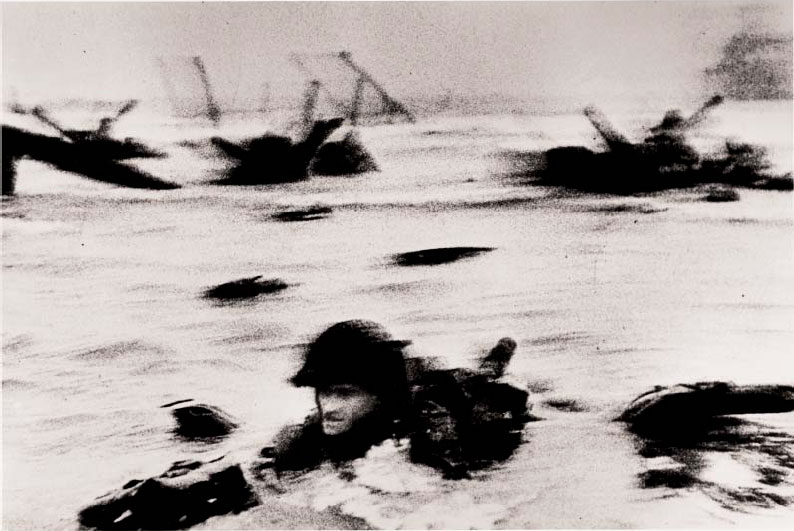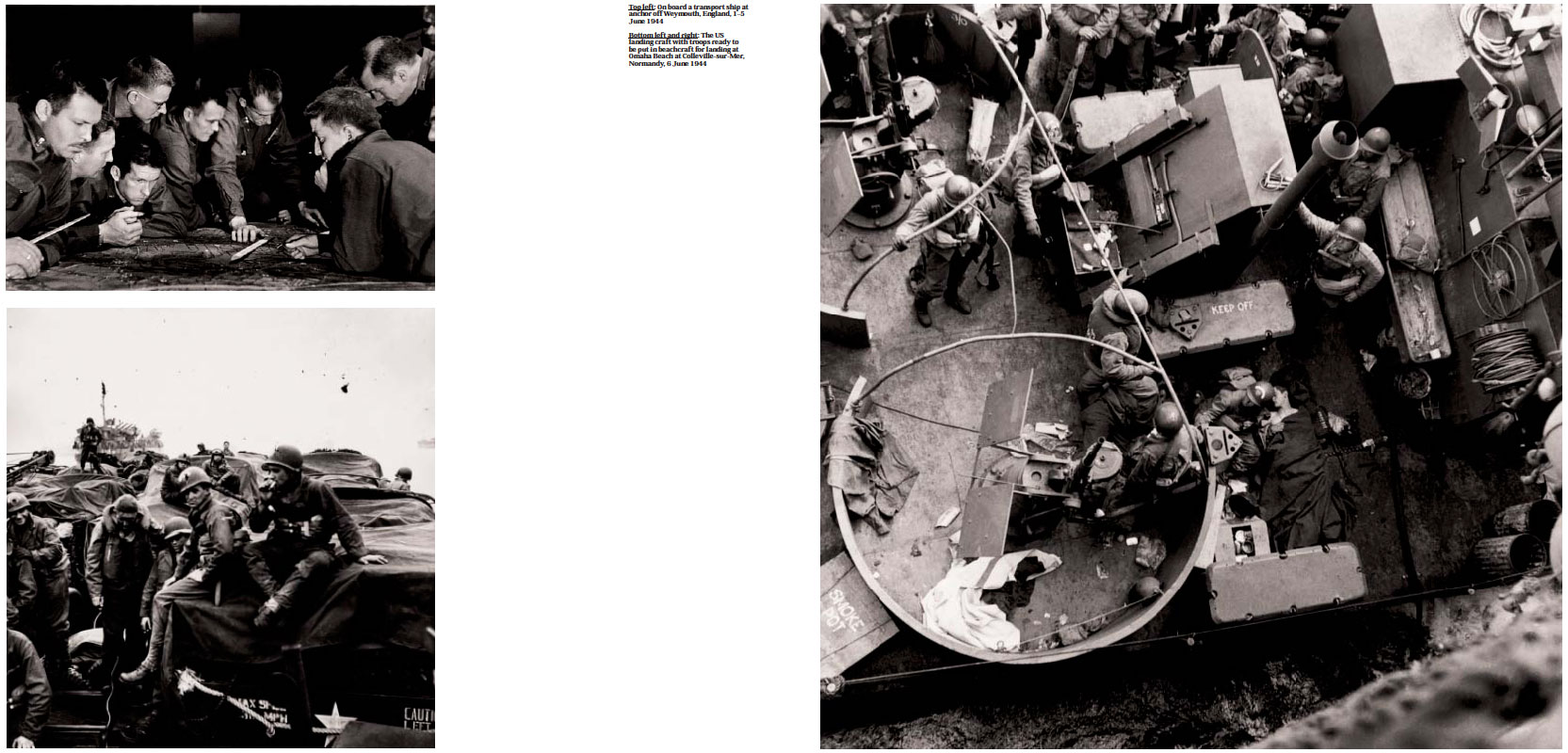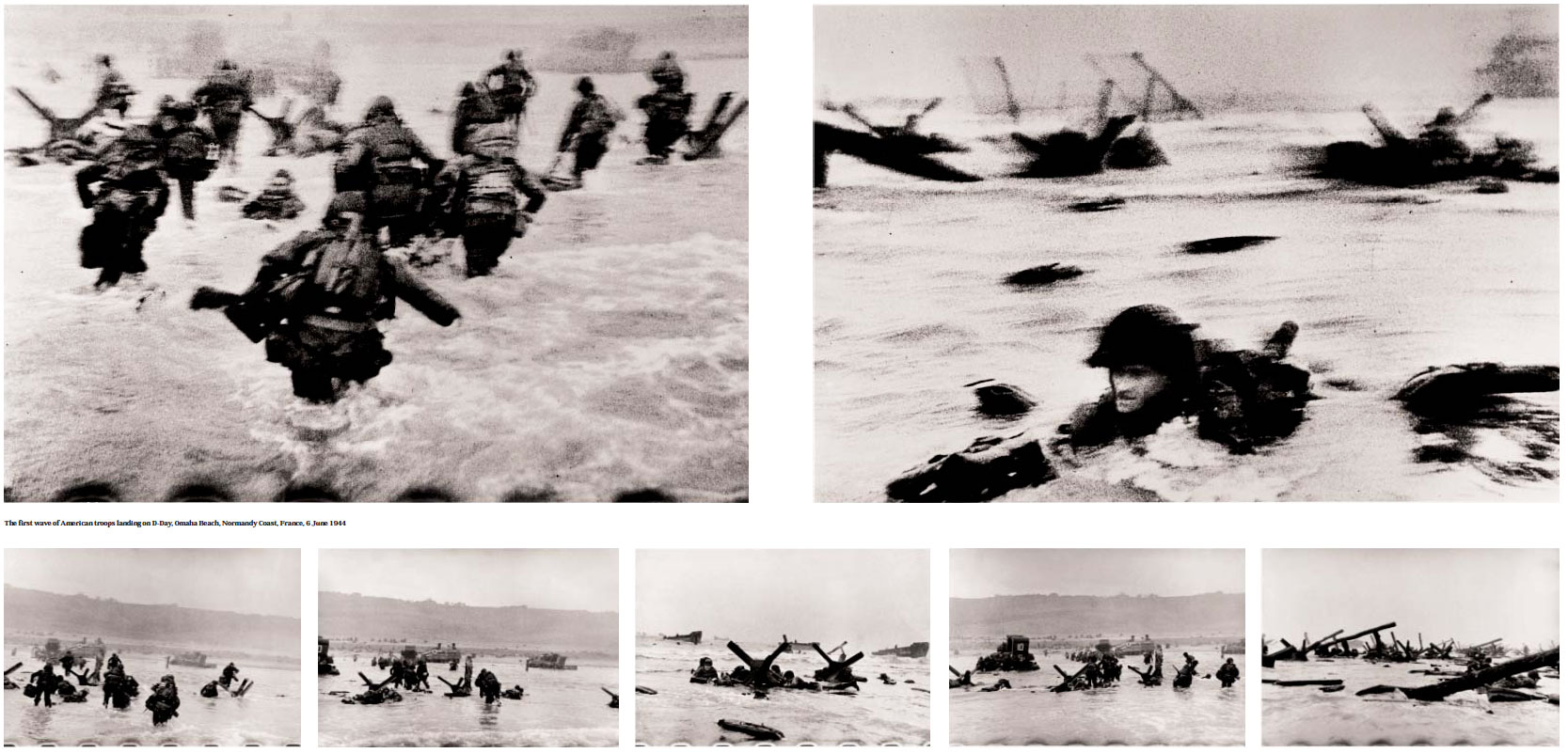
When Robert Capa shot D-Day
The Magnum founder recalled being among the first of the Allied forces landing in Normandy, 75 years ago today
How has your morning gone? This is how Robert Capa’s began exactly 75 years ago, aboard one of the first D-Day landing crafts, at 6:30am, on 6 June, 1944.
“The coast of Normandy was still miles away when the first unmistakable popping reached our listening ears. We ducked down in the pukey water in the bottom of the barge and ceased to watch the approaching coastline. The first empty barge, which had already unloaded its troops on the beach, passed us on the way back to the Chase and the Negro boatswain gave us a happy grin and the V sign,” he wrote in his autobiography, Slightly Out of Focus, parts of which are reproduced in our book Magnum Stories. “It was now light enough to start taking pictures, and I brought my first Contax camera out of its waterproof oilskin. The flat bottom of our barge hit the earth of France. The boatswain lowered the steel-covered barge front, and there, between the grotesque designs of steel obstacles sticking out of the water, was a thin line of land covered with smoke – our Europe, the ‘Easy Red’ beach.”

Capa, a Hungarian-born photographer who relocated from Paris to New York following the outbreak of the war, chose to document the Allied invasion embedded among the first wave of soldiers to land on those heavily defended beaches, braving the chilly Atlantic waters and the Third Reich’s fire power, in order to capture just a few, precious frames of history.
“The bullets tore holes in the water around me, and I made for the nearest steel obstacle,” he recalled. “A soldier got there at the same time, and for a few minutes we shared its cover. He took the waterproofing off his rifle and began to shoot without much aiming at the smoke-hidden beach. The sound of his rifle gave him enough courage to move forward and he left the obstacle to me. It was a foot larger now, and I felt safe enough to take pictures of the other guys hiding just like I was.
“It was still very early and very grey for good pictures, but the grey water and the grey sky made the little men, dodging under the surrealistic designs of Hitler’s anti-invasion brain trust, very effective."

Unsure of the quality of his images, Capa sent his rolls back to the British capital for processing, only to have almost all of his hard-won images lost following a lab mistake.
“Seven days later, I learned that the pictures I had taken on ‘Easy Red’ were the best of the invasion,” Capa is quoted as saying in our book Magnum Stories. “But the excited darkroom assistant, while drying the negatives, had turned on too much heat and the emulsions had melted and run down before the eyes of the London office. Out of one hundred and six pictures in all, only eight were salvaged. The captions under the heat-blurred pictures read that Capa’s hands were badly shaking.”
Whose hands wouldn’t be? And camera shake aside, Capa’s magnificent surviving images remain among the most moving war photographs ever taken. Not a bad morning’s work.
For more, take a look at our photo books here, which include our Robert Capa book here and Magnum Stories.